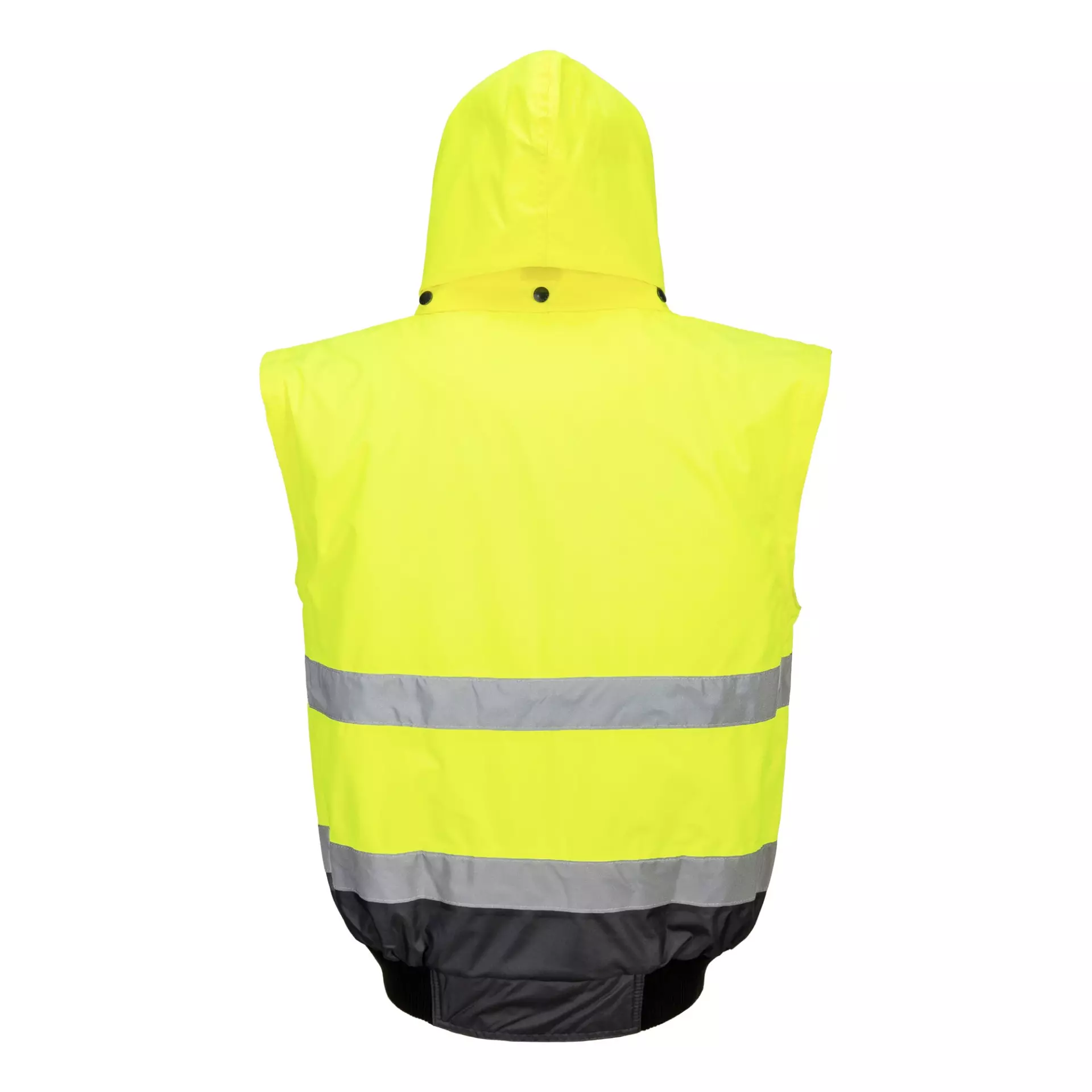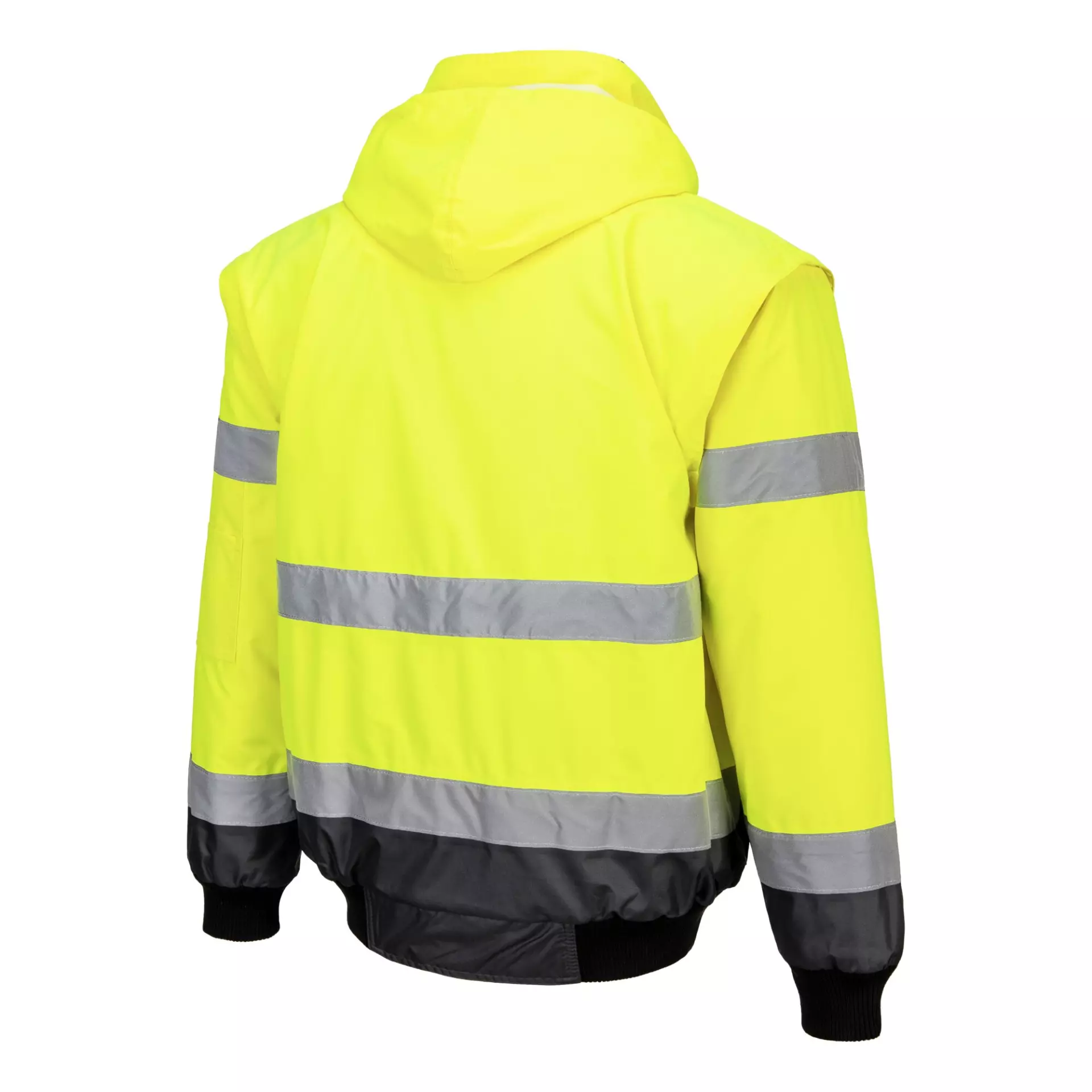


Features You'll Love

Closure Style · Zipper
Pocket System · Phone Pocket
The method used to fasten the jacket or vest, affecting ease of use, security, and weather protection during work activities.
Keep your phone safe, secure, and always within reach for ultimate convenience on the job.

Cuff Style · Knit
Material · Vinyl / Polyvinylchloride PVC, Fleece, Fabric, Polyester
EN 20471 · Reflective Strip Area Grade 3
How the sleeve opening closes or fits at the wrist, affecting protection from elements and comfort during movement.
Provides the highest level of visibility for high-risk environments, such as working near fast-moving traffic (>60 km/h) or in dark/low light conditions. Garments cover the torso and have reflective strips on sleeves or full-length legs for 360-degree visibility.

Jacket Type · Bomber
The bomber style offers a comfortable, waist-length fit for unrestricted movement, keeping you agile and focused on the job.

Jacket Type · Hooded
An integrated hood provides essential head protection from the elements, keeping you dry and focused on the job.
Portwest
Hi-Vis 3-in-1 Contrast Bomber Jacket, Yellow/Grey
Hi-Vis 3-in-1 Contrast Bomber Jacket, Yellow/Grey
5 / 5
76,29 €
Choose size
Out of stock
Free delivery
Features You'll Love

Closure Style · Zipper
Pocket System · Phone Pocket
The method used to fasten the jacket or vest, affecting ease of use, security, and weather protection during work activities.
Keep your phone safe, secure, and always within reach for ultimate convenience on the job.

Cuff Style · Knit
Material · Vinyl / Polyvinylchloride PVC, Fleece, Fabric, Polyester
EN 20471 · Reflective Strip Area Grade 3
How the sleeve opening closes or fits at the wrist, affecting protection from elements and comfort during movement.
Provides the highest level of visibility for high-risk environments, such as working near fast-moving traffic (>60 km/h) or in dark/low light conditions. Garments cover the torso and have reflective strips on sleeves or full-length legs for 360-degree visibility.

Jacket Type · Bomber
The bomber style offers a comfortable, waist-length fit for unrestricted movement, keeping you agile and focused on the job.

Jacket Type · Hooded
An integrated hood provides essential head protection from the elements, keeping you dry and focused on the job.
Product description
This high-visibility 3-in-1 contrast bomber jacket provides versatile protection against all weather conditions with its modular design featuring detachable fur lining, collar, and zip-off sleeves. The waterproof construction with taped seams and PFAS-free Texpel™ Splash Eco fabric finish ensures reliable protection, while EN342 certification guarantees performance in temperatures down to -36°C. With 11 strategically placed pockets and multiple wearing configurations, this jacket offers exceptional functionality for demanding work environments.
Product Features:
- 3-in-1 design with detachable sleeves, fur liner, and fur collar for multi-way wearing options
- Waterproof construction with taped seams preventing water penetration
- PFAS-free Texpel™ Splash Eco fabric finish for water resistance
- 11 pockets including chest, side zip, sleeve, inner chest, and phone pockets for comprehensive storage
- Concealed detachable hood with storm flap front protection
Technical Details:
- EN342 protection against cold certified up to -36°C
- 40+ UPF rated fabric blocking 98% of UV rays
- Waterproof rating: 15,000mm
- Knitted cuffs and hem with half elasticated waist
- Two-way zip with radio loop and D-ring for accessories
Standards:
- EN ISO 20471 Class 3 (certified after 50x washes)
- EN 343 Class 3:1 X (WP 15,000mm)
- EN 342 (0.344 (M².K/W), 2, X)
- ANSI/ISEA 107 Type R Class 3
- ANSI/ISEA 107 TYPE P Class 3
- AS 4602.1:2024 Class D/N
- RIS 3279 TOM Issue 2 compliance for rail industry
- CE certified and UKCA marked






